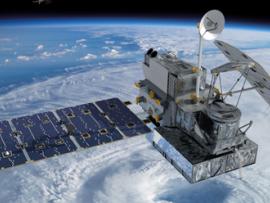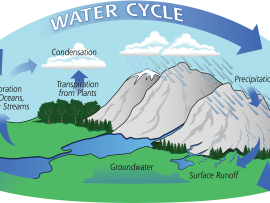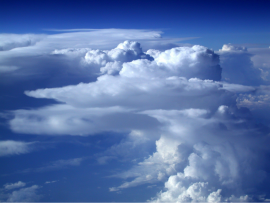Search
Primary tabs
Search
Your search for "Precipitation" gave back 163 results.
Primary Topic:
Subtopics:
Type:
Keywords:
Summary:
The process by which water moves around the earth, from the ocean, to the atmosphere, to the land and back to the ocean is called the water cycle. These animations each portray a component of the water cycle.
Primary Topic:
Subtopics:
Type:
Keywords:
Summary:
The process by which water moves around the earth, from the ocean, to the atmosphere, to the land and back to the ocean is called the water cycle. These animations each portray a component of the water cycle.
Primary Topic:
Subtopics:
Type:
Standards:
Summary:
This video, "Our Wet Wide World", provides an overview of the Global Precipitation Measurement Mission and its goals.
Primary Topic:
Subtopics:
Type:
Keywords:
Summary:
GPM Project Scientist Dr. Gail Skofronick-Jackson and Deputy Project Scientist Dr. George Huffman narrate a look at the new GPM IMERG global dataset.
Primary Topic:
Subtopics:
Type:
Summary:
In this webquest, you will learn a little about the GPM mission, and then will focus on the Earth’s water cycle.
Primary Topic:
Subtopics:
Type:
Keywords:
Summary:
These original GPM lessons have been developed to teach students about local and global water issues. . They are hands on activities that are done largely outdoors, and which include scientific data collection and analysis and integrate technology.
Primary Topic:
Subtopics:
Type:
Summary:
For the first time in 360 degrees, this data visualization takes you inside a hurricane. The precipitation satellite has an advanced radar that measures both liquid and frozen water. Click and drag to look around.
Primary Topic:
Subtopics:
Type:
Keywords:
Summary:
This 17 page flyer provides an overview of the GPM Mission. It describes the technologies used to measure precipitation and the missions scientific goals and societal applications.
Primary Topic:
Subtopics:
Type:
Standards:
Keywords:
Summary:
Contrary to popular belief, raindrops are not tear shaped and are actually shaped like the top of a hamburger bun, round on the top and flat on the bottom. This new video from GPM explains why.
Primary Topic:
Subtopics:
Type:
Keywords:
Summary:
This lesson helps students learn about the atmosphere by making observations and taking measurements.











